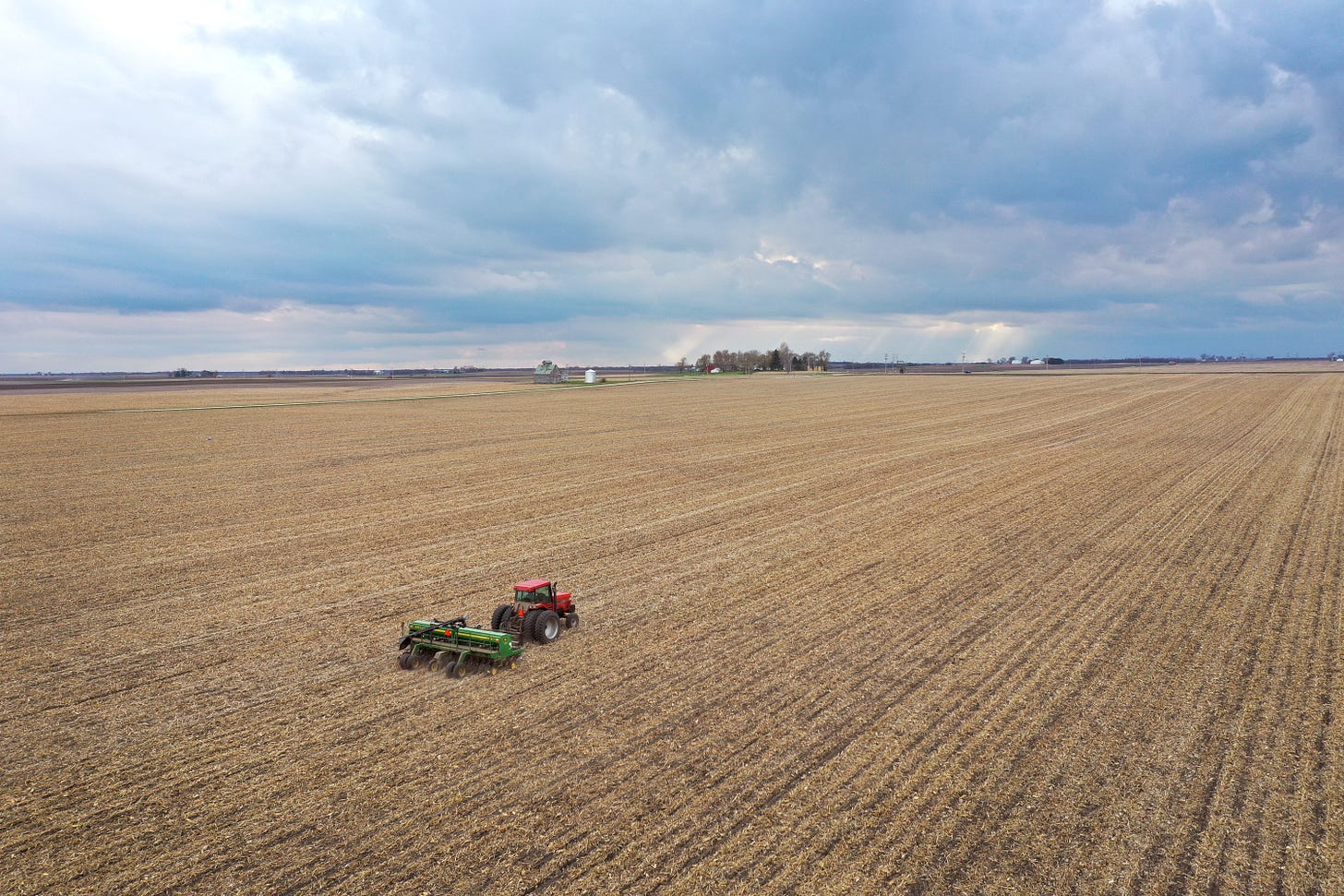What Trump Wants from the Trade War and Farm Bailouts
The president’s clash with China has harmed U.S. farmers, but he hopes to buy their love—and wanted Xi Jinping’s help to do it.

These have been trying times for America’s farmers and ranchers. First, they found themselves caught in the middle of a geopolitical struggle between the United States and China, then they struggled with a global pandemic that caused a huge decline in demand. Now, two recent news stories illustrate how the Trump administration has been using the agricultural community as pawns in its re-election efforts.
The president began an aggressive, unilateral trade war with heavy tariffs on several Chinese imports in early 2018. His administration justified the battle with a lengthy report that documented a long list of grievances about Beijing’s unfair trade practices, including intellectual property abuse, forced transfer of sensitive technology from American firms, and massive domestic subsidies.
China predictably retaliated with its own tariffs on American products, particularly agricultural products. As a result, agricultural exports to China fell dramatically. The retaliation exacted a heavy human toll: bankruptcies spiked in U.S. farm communities, and there is speculation that the financial stress is worsening the already high rates of suicides among farmers. Sensing trouble with a key constituency, the administration dusted off a New Deal-era program, the Commodity Credit Corporation, to make payments to farmers harmed by the trade war.
In 2018 and 2019, the Trump administration showered $28 billion of payments on the U.S. farm sector—although the money mostly went to large, wealthy agribusinesses, not truly needy farmers and ranchers. Now the administration is disbursing another $16 billion for COVID-19 relief to farmers and ranchers.
A number of studies have documented troubling aspects of the farm bailout payments that ought to give policymakers pause, including cases of what appear to be overpayment and double dipping. It appears that the Trump administration is using the trade-mitigation and pandemic payments to shore up support from farm constituencies in anticipation of the 2020 presidential election. “I think Congress should be concerned in terms of letting USDA just write checks with no oversight,” Joseph W. Glauber, the former top economist at the U.S. Department of Agriculture, told the New York Times. “Are these programs politically motivated? The short answer is yes.”
Much more disturbing than politically motivated subsidies is President Trump’s explicit plea to President Xi Jinping for electoral help. According to explosive details from former national security advisor John Bolton’s new book, during a one-on-one meeting with President Xi at the December 2018 G-20 summit in Argentina, Trump “turned the conversation to the coming U.S. presidential election, alluding to China’s economic capability to affect the ongoing campaigns, pleading with Xi to ensure he’d win. . . . He stressed the importance of farmers, and increased Chinese purchases of soybeans and wheat in the electoral outcome.” Though different in form, Trump’s entreaty to Xi is eerily similar in substance to his 2019 attempts to get Ukrainian president Volodymyr Zelensky to interfere in the 2020 presidential election.
But notice that Trump was not pressing Xi to end technology-transfer requirements for American firms or to better protect American intellectual property, the purported basis for the trade war in the first place. He was instead asking China to buy more soy and wheat exports from favored constituents. In other words, the trade war has never been about tackling legitimate problems with China’s economic model.
Indeed, the centerpiece of the so-called “phase one” trade agreement between Washington and Beijing inked in January are purchase commitments for agriculture products. In order to meet the purchase targets, China is relying on its state-owned enterprises, which is contradictory to the Trump administration’s goal of getting Chinese firms to operate on more market-based terms. Even after the détente, tariffs cover about 70 percent of all imports from China and the average tariff is more than 19 percent, between six and seven times higher than in 2017, the year before the trade war began.
The trade war certainly has not been in the best interests of the United States. Notwithstanding the president’s misleading claims to the contrary, the heavy tariffs the administration levied on Chinese imports have been paid by American consumers, not Chinese exporters. A recent study from the New York Federal Reserve further shows that American businesses lost nearly $2 trillion in market capitalization through lost investments as a result of the trade war.
Throughout the two-year-long trade clash with Beijing, the Trump administration made agricultural exports a high priority, while structural changes to China’s economy took a backseat. Thanks in part to Ambassador Bolton, we now know why.

